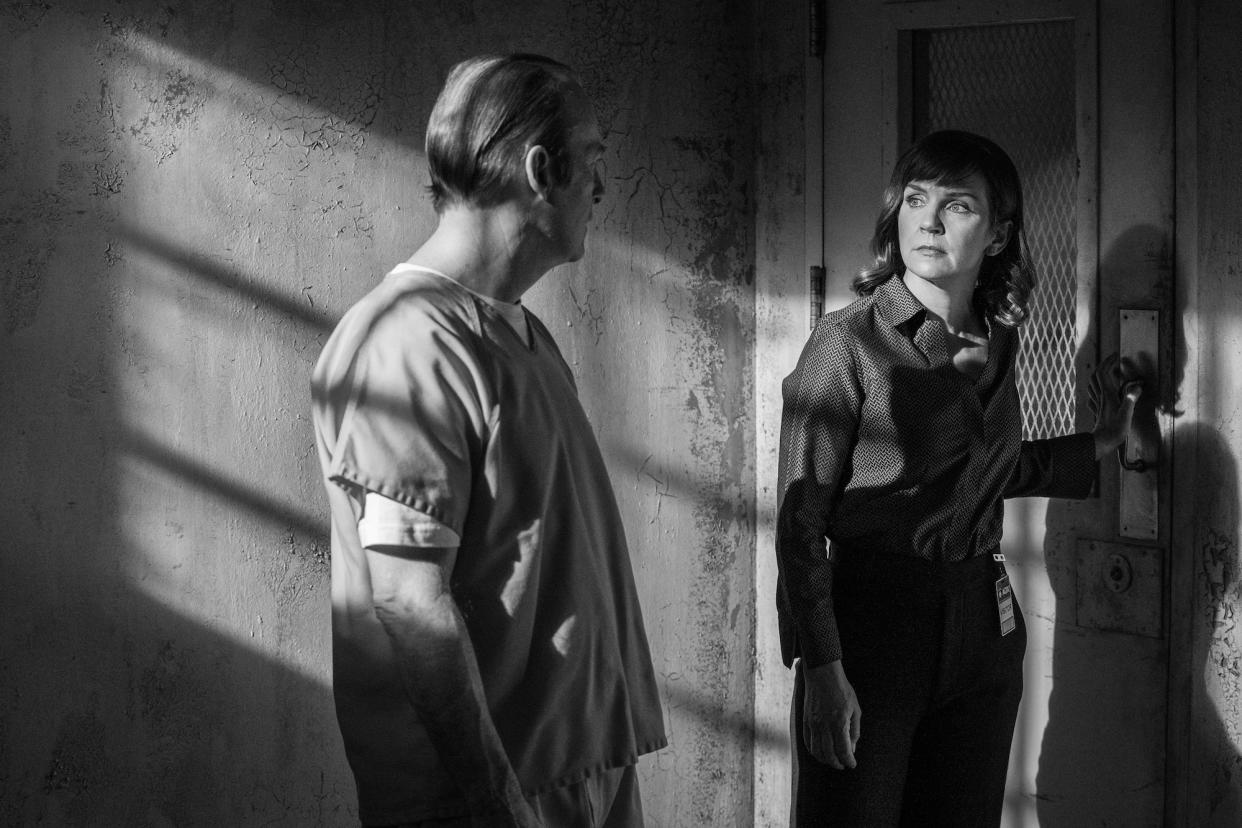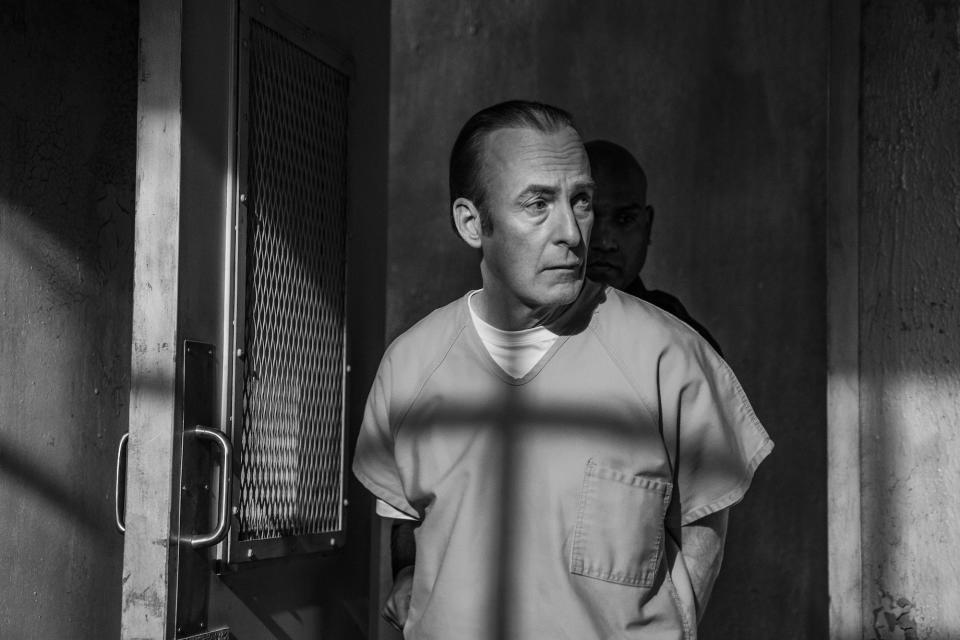‘Better Call Saul’ Finale Almost Had a Different Ending

[Editor’s Note: The following contains spoilers for “Better Call Saul” Season 6, Episode 13, “Saul Gone.”]
Goodbyes are hard, unless you’re Jimmy McGill and Kim Wexler.
More from IndieWire
'Better Call Saul' Review: Twisting Series Finale 'Saul Gone' Weighs the Price of One Man's Soul
Why 'Better Call Saul' Feels the Most Expansive When Sound Tells the Story
In the closing moments of “Better Call Saul,” the pair of former spouses and current confidants share one last on-screen cigarette in a peeling prison visitation room. They don’t say much, but Kim (Seehorn) and Jimmy (Odenkirk) arrive at an unspoken understanding of where the two stand in each other’s lives going forward. The day after the “Better Call Saul” finale aired, Odenkirk, Seehorn, and series co-creator/showrunner Peter Gould spoke with press about what went into that final scene.
“It was the easiest scene we ever shot,” Odenkirk said with a smile. “They’re two people who belong together, who are comfortable with each other in a deep way, which is a great thing for a long term relationship. He could just let go of all the manipulation and wanting something to be different, or arguments that they might need to be making, and they could just exist next to each other.”
“It was the very last scene we shot on the series,” Seehorn said. “This is them at their best, even in a horrible place. They’re without artifice and without armor and sort of maskless to each other, which is the best part of their relationship, that they were able to be that for each other. I was very struck, coming into the scene, the way Bob was playing his side was very caretaking. Steadying her hand and even the way he’s making the joke, it’s such a perfectly written scene.”
There are a few more emotional beats in the episode, as Kim leaves the prison with Jimmy watching her as she goes. In the run-up to Monday night, Gould weighed whether that image of the two leaning up against the visitation room wall could be the place to leave things off.
“I was on the bubble about the very last scene in the prison yard. There was a version that didn’t have that, that ended ended with the two of them smoking,” Gould said. “I went back and forth on that for a while. Then ultimately, having watched them both, I felt like it was right. It felt more honest, to end with the two of them apart rather than the two of them together. But those were all things that were discussed and struggled with in the editing, moreso than most episodes.”
The smoking moment is a nod to the way the show introduces Jimmy and Kim as a potential team in the show’s pilot, silently taking drags off the same cigarette. Odenkirk and Seehorn relied on instinct to get them to the place they needed to be to bring things full circle.
“It just felt very natural to me. I knew that I was duplicating that scene without making much of an effort,” Odenkirk said.

Greg Lewis/AMC/Sony Pictures Television
“I knew this was a callback, but I didn’t want to have it in my head that it was my job to copy that scene,” Seehorn said. “When you lean against a wall, but don’t want your hair to touch it and you have heels on, the body language that you see while talking to somebody, you run out of choices. That’s how you have to lean.”
Symmetry has been a hallmark of both “Breaking Bad” and “Better Call Saul.” Gould wanted to make sure that, in this particular case, that mirroring moment was a result of a character choice rather than storytelling cleverness.
“I did watch the see the opening scene. Hopefully it’s not excessively cute on our part because I think the characters are doing it on purpose. It’s a sign to each other that there’s still something between them, that there always was. It’s literally something that the two of them are doing. So I didn’t feel the need to control it too much,” Gould said. “But on the other hand, Marshall Adams, our brilliant DP, found a way to put this amazing slash of light across the across the back of the wall. Those windows in that room were all laid out very carefully to lead there. I would point out that the slash goes in the opposite direction than it did in the pilot. So it’s not an exact duplicate.”
That deference to what works best for the story also pops up in one of the finale’s lightest touches. When Kim lights the cigarette, a tiny bit of color from the glow of the ash seeps into the black-and-white post-Saul world.
“We made that color very subtle. I was wanting to make sure that everyone was watching the wonderful performances that Bob and Rhea were giving and this moment between the characters and not getting distracted by technical artifice in the scene,” Gould said. “This is the one bit of color in his world, the relationship with Kim such as it is and that she’s the one person who who sees him as he is and as he was. It just felt right.”
One of the show’s original ending ideas still featured Kim and Jimmy having a final moment together, but under much different circumstances. In Gould’s words, that sequence would have completely changed the main emotional makeup of the finale as a whole.
“When we first broke this episode, the two of them were meeting in Albuquerque before he went to prison. The last scene was him in prison by himself, thinking. I liked that a lot, but it seemed a little cold. Ultimately, we all felt like ending with the two of them felt like felt like the strongest way to go,” Gould said. “In the original version, he was fearful about what was going to happen to him in prison and it was a lot about the fear. This is a very different scene. It’s mostly about connection, and a wistful connection.”
You can read all of IndieWire’s “Better Call Saul” coverage here, including our review of the series finale, “Saul Gone.”
Best of IndieWire
‘The Lord of the Rings’: Everything You Need to Know About Amazon’s Big Money Adaptation
Charlie Cox and Vincent D'Onofrio Set to Reprise 'Daredevil' Roles for Marvel Series 'Echo'
'The Last of Us': Everything You Need to Know About HBO's Adaptation
Sign up for Indiewire's Newsletter. For the latest news, follow us on Facebook, Twitter, and Instagram.

 Yahoo News
Yahoo News 
